Email Marketing
How to Choose the Right Colors for Effective Email Marketing

Email Marketing

Android green. McDonald’s golden arches on red. Facebook blue. Colors are a core component of brand recognition. What are yours?
You probably stick to a brand color palette to keep your messages consistent. And, if it’s a special email – like a holiday send – maybe you’ll switch it up from the norm. Although it may be routine for many of your emails, color is an essential part of your email template design and development process. For instance, how many colors should you use? What color should you make your call to action (CTA) button? What about links? What does purple mean?
Let’s dive into the essentials of color psychology, some examples of the right colors for effective email campaigns, and how to use contrasting colors to improve accessibility.
You probably already know the basics of color psychology, like blue, which is calming, and red means danger. But how does this affect your email marketing campaign?
Color psychology is the ace up your sleeve to add nuance to your messaging and appeal to your target audience’s emotions. In short, color psychology is the study of how our perception changes because of different colors. Colors have a significant impact on our feelings. If you can affect your subscriber’s emotions through color, you can also affect their behavior.
For instance, color can attract specific types of shoppers, as shown below. Keep your target audience in mind while selecting colors for your email campaigns.

In addition, color psychology can be gender-specific. Specific colors are favored more by men than women, as shown below. While these insights can be helpful, be careful not to jump to conclusions. The colors used in email campaigns are the perfect thing to A/B test in order to find out what really works with your subscribers. Every list is different.
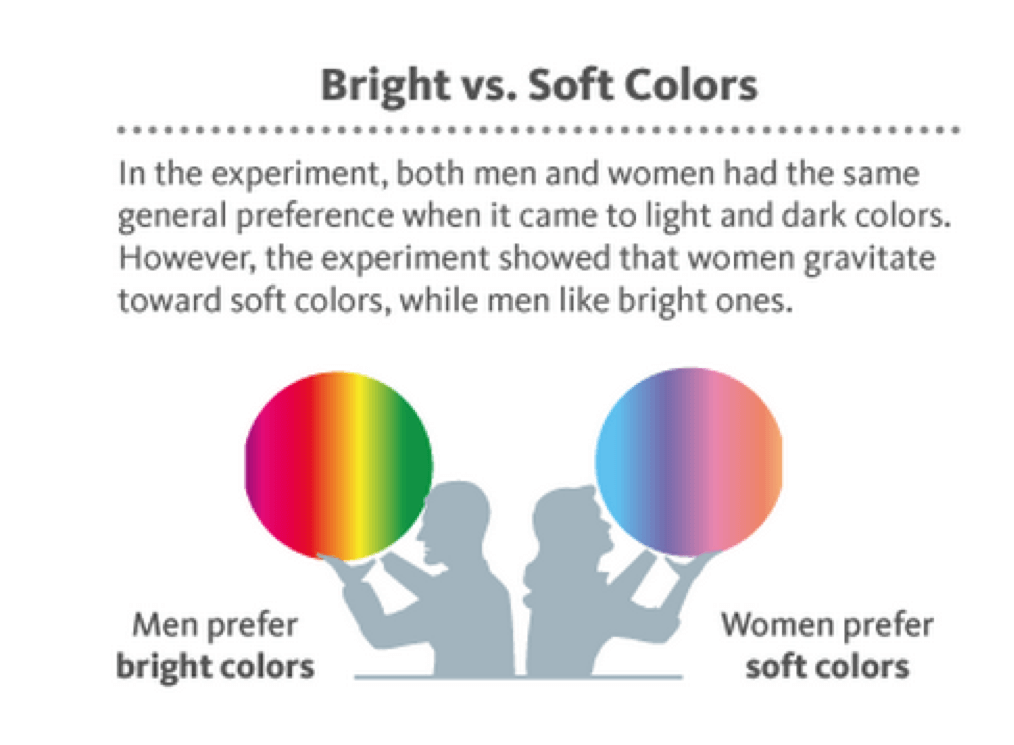
With that said, how do you choose the right colors? Let’s start by learning what different colors mean and then look at some examples for using color in specific types of emails.
Colors are highly subjective, but they’re also powerful tools in enhancing your email campaigns. Now that we know why colors matter, here’s a list of colors with their HTML color codes and a short explanation of what they mean:
In general, bright, energetic colors grab your reader’s attention, while neutral and dark colors help them relax. Below, let’s look at how to pick the right color for certain types of messages.
The most important part of determining the color palette for your email templates is making sure the colors are consistent with your brand. Maintaining brand integrity is your first priority. After that, we can start to think about how to use colors to sway the moods and preferences of our target audience.
Let’s look at three examples of specific types of emails and the right colors to fit our messaging.
Check out this email campaign from MAC. With a subtle white background and simple black text, they’ve used bright red to make their message pop. They use the same red below in their CTA button to inspire a sense of urgency and appeal to their subscribers to click through to their web page.
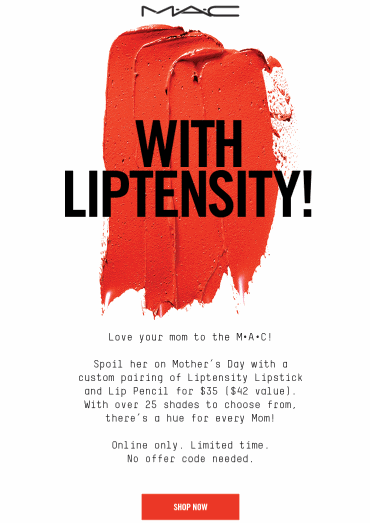
Takeaways: Use red sparingly to boldly appeal to your subscriber’s impulsivity.
Bright yellows add a sense of energy and sunniness appropriate for Calzedonia’s summery message.
This email pairs bright colors with a neutral palette to tone down the email. Too much bright yellow by itself might create a sense of anxiety instead of a feeling of a light and cheery vibe.
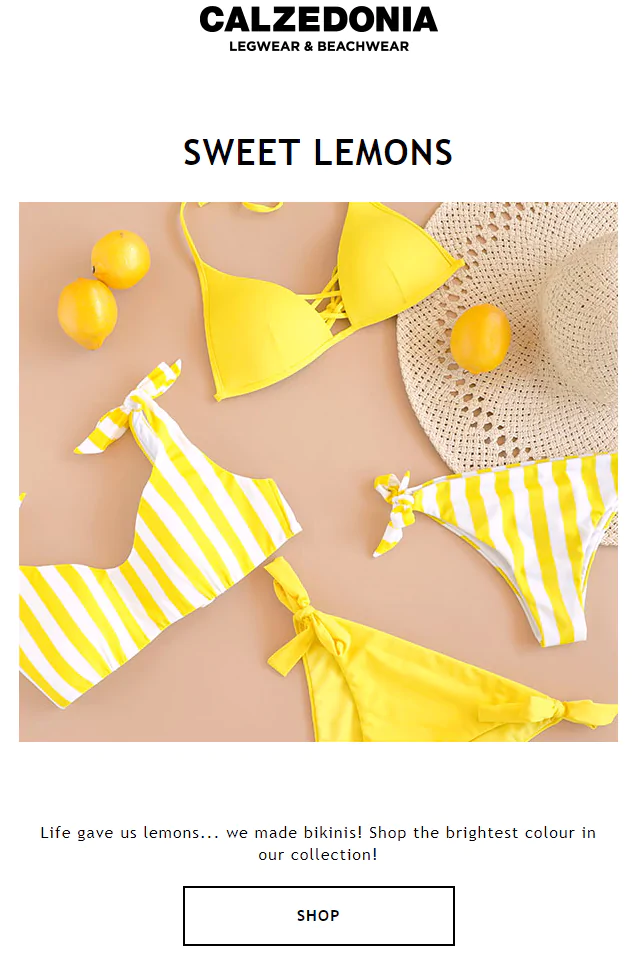
Takeaways: Use bright yellows to make your messages pop with energy. Remember to pair the yellows with something more neutral to keep your messages from edging into anxious territory.
This powerful example from Chanel screams elegance and prestige with its dark palette. Notice how the email designer used white to make the Chanel name and messaging stand out while using darker tones to create a sense of mystery.

Takeaways: Use black to add a sense of luxury and je ne sais quoi to your email marketing. Use contrasting colors to highlight your messaging.
Besides using color to spice up your email campaign and stay on-brand, you can improve email accessibility by choosing the right contrasting colors.
Worldwide, the World Health Organization estimates that 1.3 billion people live with some form of vision impairment. Roughly 217 million of those have moderate to severe vision impairment. How many of those people are interacting with your emails?
Below, we’ll learn how to improve your email marketing accessibility by using the proper contrast ratios and some best practices for using certain colors associated with vision deficiency.
Contrast ratio is the variation between the background colors and foreground colors. In an email, the foreground color is often the color of the text you’re working with, but it can also apply to graphics, diagrams, or logos.
The Web Content Accessibility Guidelines (WCAG) 2.0 set standards for web accessibility, including contrast ratio minimums. WCAG has a calculator that assigns a number between 1 and 21 that indicates how much contrast your background and foreground colors have. A 1:1 ratio is very little contrast (white text on a white background), while a 21:1 ratio is high contrast (black text on white background).
Colors with a lower contrast ratio can be difficult for certain subscribers to read; people with vision impairments may have trouble discerning text that is too close to the background color.
Check out the diagram below for examples of good and bad contrast examples. Try squinting your eyes a bit and see how difficult it is to read the bad contrast examples:
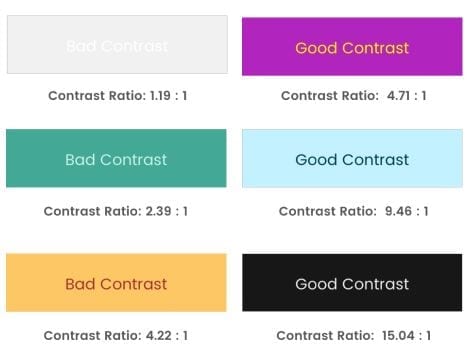
WCAG’s Level AA standards specify that your email colors should have a contrast of at least 4.5:1 for standard-sized text. For text larger than 23px or bold text larger than 18px, the contrast ratio can be 3:1.
If your team needs to meet level AAA guidelines, you must use a contrast ratio of at least 7:1 for normal text and 4.5:1 for large text.
If a subscriber cannot see blue, will they be able to figure out where the links are in your email?
People with certain color vision deficiencies can find it difficult to tell what text is clickable if it does not have a different typeface or an underline. And if your subscribers can’t see a link, they can’t click and engage with your email. This principle applies to all text in your email. If you’re using color to differentiate some text from others, remember that not every subscriber may be able to see those colors.
When designing and developing your email, remember that color shouldn’t be the only defining characteristic for a link. Use underlines, bold typeface, symbols (>), or buttons to indicate clickable text.

Imagine that you’ve coded a beautiful email with brand colors only to find the email client completely reversed your color choices to show the opposite hue.
That’s what can happen when emails are opened in dark mode with certain mailbox providers. They will invert colors. This doesn’t happen with graphics so much as with the hex colors coded into the background and fonts of your email.
However, if you designed an email for a white background, will your images and graphics still look good on a dark background? Will your text still be readable?
With dark mode usage on the rise, these are important questions to ask. Find out more about dark mode emails and how to address common dark mode development challenges.
We’ll leave you with a few simple tips for using color in your emails:
Remember, everything depends on your target audience. Build your visual brand identity with your target audience in mind, and develop your color scheme to reflect your subscriber base and intended messaging.
If you’re curious about how your email design measures up to accessibility standards and subscriber preferences, run it through Campaign Precheck. This tool includes a step for email accessibility that checks the contrast ratio and flags anything below the level AA standard. If anything doesn’t meet the standard, Campaign Precheck will adjust the email code, so the colors meet the minimum requirements.
Try us free for seven days and get unlimited access to email, image, and spam testing to ensure you get delivered and look good doing it!
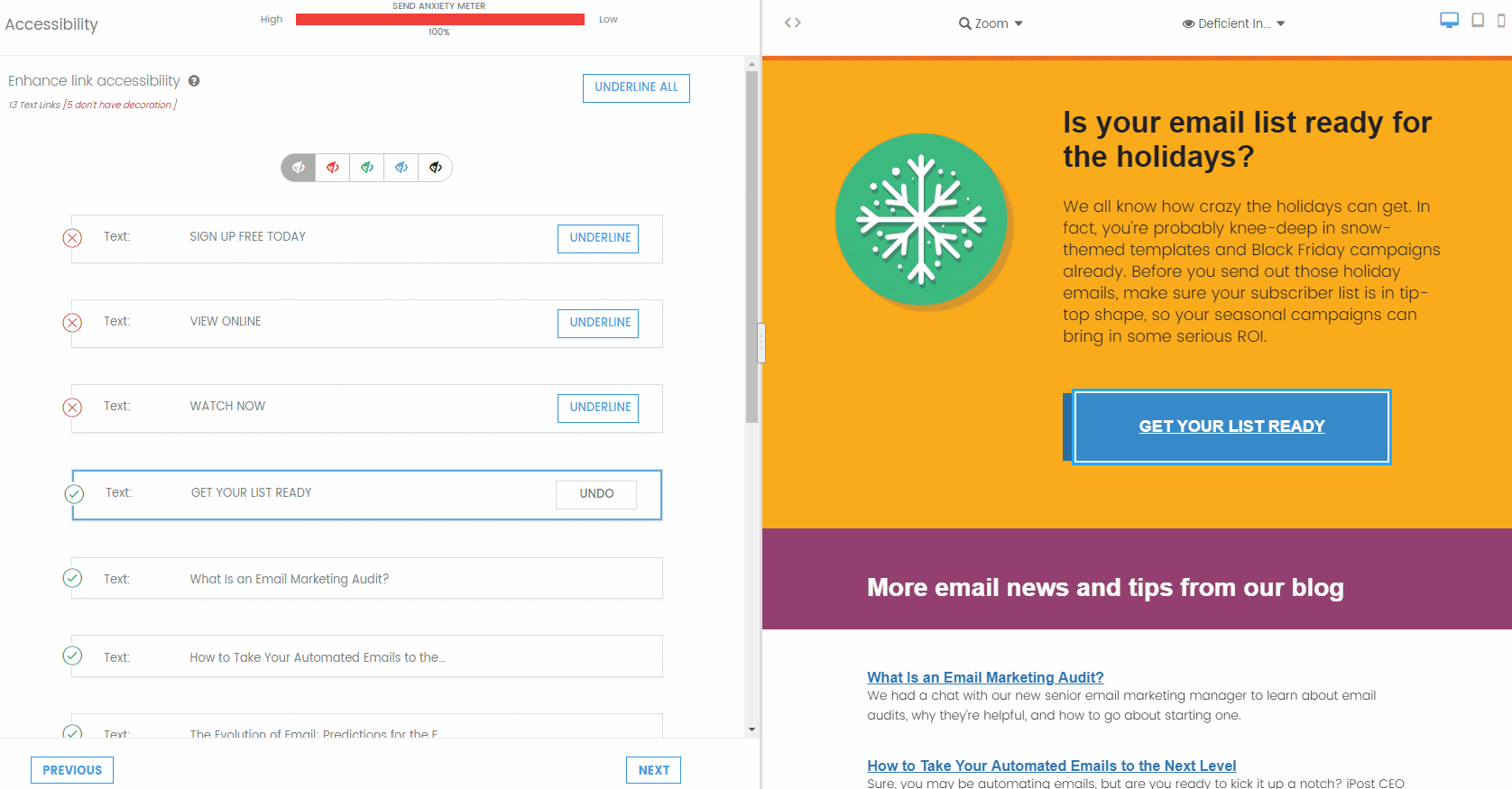
This article was updated on April 4, 2022. It was first published in December of 2018.